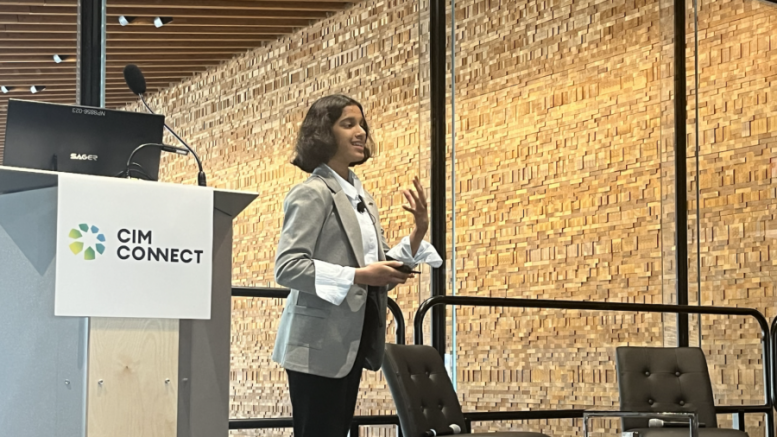At 12 years old, Nivritti Vikram already knows what many adults don’t – that when it comes to the products we use and the food we consume – if it’s not farmed, it’s mined.
Vikram captured an audience of CEOs at the CIM conference in Vancouver on Monday with her presentation: The Power of Sustainability: Responsible Mining and Resource Management (A 12-year-old’s views).
CIM had put out a call out for abstracts to submit thoughts on sustainable practices in mining operations, and the Toronto-based sixth-grader’s submission stood out, to say the least.
“What I lack in experience I make up for in passion,” the student and daughter of mining engineers told the audience.
“I think this is a great opportunity for everyone in this room to understand what is going through the minds of kids like me when we talk about mining.”
In preparation, Vikram canvased her schoolmates for their thoughts on the mining industry, and was generally met with grim descriptors such as: ‘dangerous’, ‘poor working conditions’, ‘damages water sources’, ‘suffocates plant and animal life’, as her peers highlighted the industry’s damaged reputation due to a legacy of unsustainable environmental practices.
But in her view, the industry is evolving, and coming together as one, striving to be responsible and sustainable.
“Clearly my generation has associated mining as an industry as irresponsible, climate changing, and one that generates carbon…and it seems to ask the question, what should our future look like?”
Vikram envisions a future where the mining industry lives in harmony with nature, where everything that is used is recycled, where all power is renewable, and there “is no carbon.”
Educating peers, industry
“I explained to my friends, that all things, from steel, solar panels, and even the TV, all comes from metals from mines, and mines are as important as the food we eat,” Vikram said.
She conceded both that all mines are not performing equally, and emphasized her fellow sixth graders do have a point.
Vikram said for the industry to meet the expectations of her peers, miners need to innovate extraction methods, so less ore is churned to get to the valuable metals.
“It might be cheaper to get tonnes of rock out in the hopes of getting a few grams of gold out, however, it makes very little sense for sustainability,” she said.
Vikram pointed to the use of selective mining with new technologies and artificial intelligence (AI) to improve sustainability in operations.
“This now needs to be mainstream, and not just the poster child of big companies,” she said. “Reduce handling, re-handling, shipping for processing elsewhere, and shipping that product for refining elsewhere.
“The key, in my view, is to produce metal, and disrupt as little as possible while making metal. Use GPS tracking and AI to map out biodiversity to put plans into place for them to be actively managed in the mines of the future, while maximizing power to be used in the future, and hybridize all vehicles,” Vikram said.
“And remember – if it’s not sustainable, it becomes irrelevant,” Vikram told the audience — and received a standing ovation.


Be the first to comment on "CIM: Responsible mining, resource management from a 12-year old’s view"